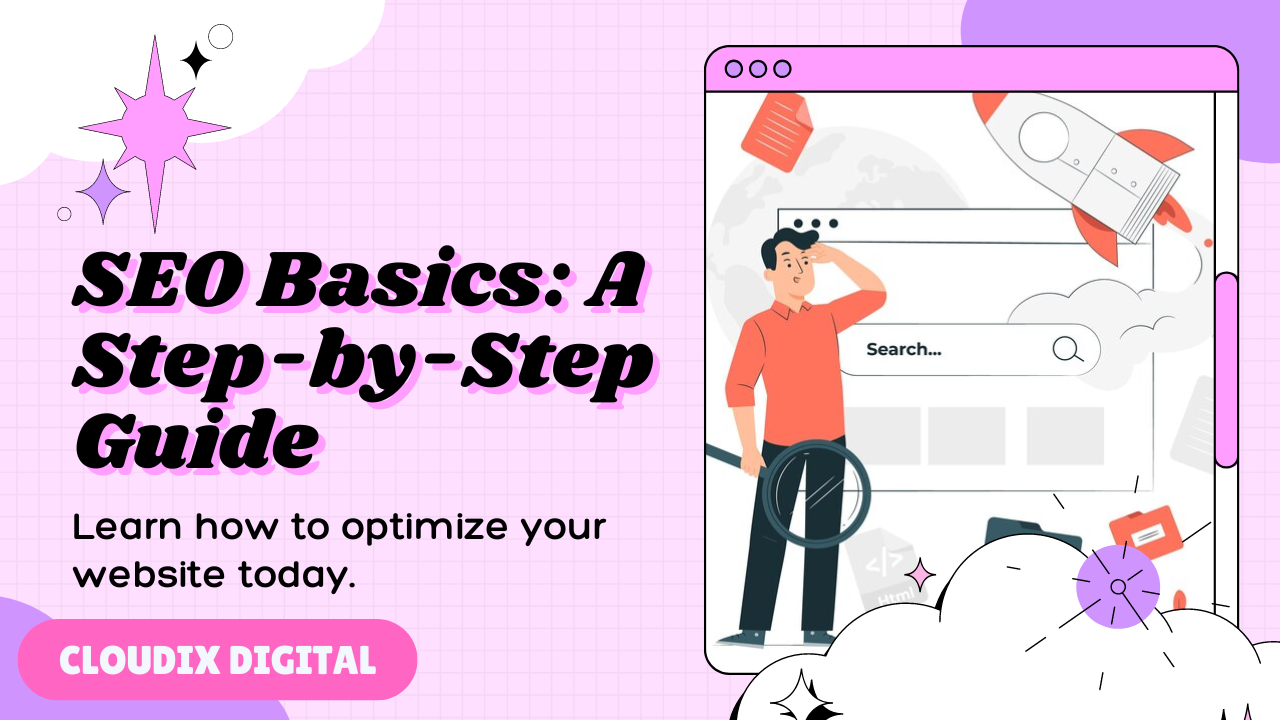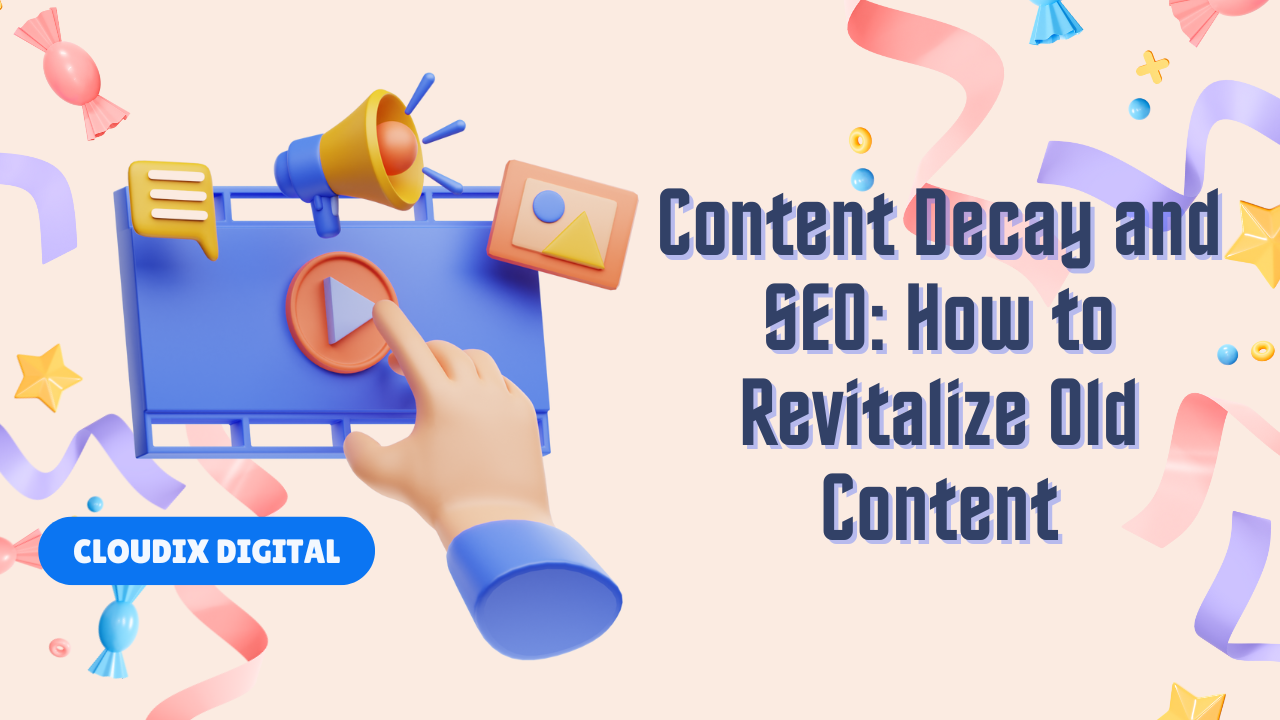
In the vast landscape of the internet, standing out is crucial. Search Engine Optimization (SEO) is your gateway to achieving online visibility and driving organic traffic to your website. For absolute beginners, navigating the SEO realm might seem daunting, but fear not! This step-by-step guide will break down the essentials of SEO in a beginner-friendly manner, ensuring you can grasp the basics and set your online presence on the right track.
Understanding SEO Basics:
Search Engine Optimization, or SEO, is the practice of optimizing your website to enhance its visibility on search engines like Google. The goal is to rank higher in search results, making it more likely that users will find and click on your site. The foundation of SEO lies in understanding how search engines work.
Search engines use complex algorithms to determine which pages to display in response to a user’s query. These algorithms consider various factors, such as keywords, content quality, and user experience. By aligning your website with these factors, you can improve its chances of ranking higher in search results.
Keyword Research:
Keywords are the building blocks of SEO. These are the words or phrases that users type into search engines when looking for information. Conducting thorough keyword research is the first step in optimizing your content. Start by brainstorming potential keywords relevant to your business or content.
Use tools like Google Keyword Planner or Ubersuggest to identify popular and relevant keywords in your niche. Choose keywords that have a balance between search volume and competition. Once you’ve compiled a list, strategically incorporate these keywords into your website’s content, headings, and meta tags.
On-Page SEO:
On-page SEO involves optimizing individual web pages to rank higher and earn more relevant traffic. Begin by optimizing your page titles, ensuring they are concise, compelling, and include relevant keywords. Craft meta descriptions that provide a brief overview of your content and encourage users to click.
Produce high-quality, relevant content that addresses the needs of your audience. Use headings and subheadings to structure your content logically, making it easy for both users and search engines to understand. Additionally, optimize your images by using descriptive file names and alt text. Alt text serves as a textual alternative to images, offering a descriptive account of their content. Instead of settling for nondescript phrases like “A picture,” a conscientious approach involves crafting alt text that vividly narrates the visual elements. For example, “Colorful hot air balloons in the sky during a festival” goes beyond a mere identification and paints a mental image, fostering a richer understanding for users relying on screen readers or facing visual impairments.
Off-Page SEO:
Off-page SEO focuses on improving your website’s credibility and authority in the eyes of search engines. This is achieved through backlinks – links from other reputable websites to yours. Develop a backlink strategy by creating shareable content, reaching out to industry influencers, or guest posting on relevant blogs.
Social media also plays a role in off-page SEO. Engage with your audience on platforms like Facebook, Twitter, and Instagram. Sharing your content on these platforms can increase its visibility and potentially lead to more backlinks. Remember, search engines consider the quality, not just the quantity, of backlinks.

Technical SEO:
Technical SEO ensures that search engines can crawl and index your website efficiently. Start by creating a sitemap, a file that provides information about your site’s pages and their relationships. Submit this sitemap to search engines to help them understand your site’s structure.
Optimize your website’s loading speed by compressing images, using browser caching, and minimizing HTTP requests. Ensure that your site is mobile-friendly, as search engines prioritize mobile-friendly websites. Regularly check for broken links and fix them promptly, as they can negatively impact user experience and search rankings.
Monitoring and Adaptation:
SEO is an ongoing process. Regularly monitor your website’s performance using tools like Google Analytics. Track key metrics such as organic traffic, bounce rate, and conversion rates. Analyze this data to identify areas for improvement and adjust your SEO strategy accordingly. Stay informed about industry trends and algorithm updates, as search engines constantly evolve. By staying proactive and adapting to changes, you’ll ensure that your website continues to rank well in search results.
Congratulations! You’ve now navigated the basics of SEO for absolute beginners. Remember, SEO is a continuous journey, and success doesn’t happen overnight. By understanding and implementing these fundamental steps – from keyword research to technical optimization – you’re well on your way to improving your website’s visibility and driving organic traffic. Keep learning, stay updated, and watch your online presence flourish in the digital landscape.
By grasping the fundamentals outlined in this SEO guide, you’re establishing a solid foundation in the online visibility realm. Cloudix Digital is dedicated to assisting beginners on this enlightening journey. Eager to unleash the power of SEO? Keep an eye out for additional advice, strategies, and insights from our experts to elevate your digital presence.
Keep in mind, expertise empowers progress, and with Cloudix Digital’s support, you’re well on your way to becoming a proficient SEO enthusiast. Embrace the learning process and online triumph!
Connect with us today to explore how we can enhance your SEO endeavors and propel success for your website.
Learn more about us on our social media platforms:













